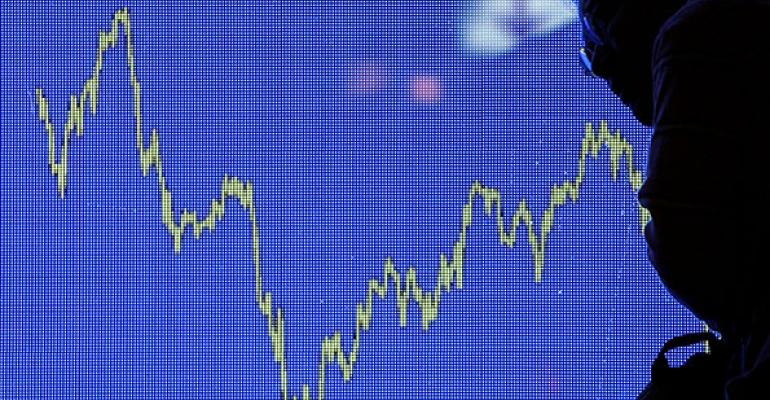(Bloomberg) -- As banking stress sparked turmoil on Wall Street last week, a familiar bogeyman is being blamed for making things worse: Thin liquidity.
Goldman Sachs Group Inc.’s Scott Rubner, who has studied flow of funds for two decades, calculates the ease of trading S&P 500 futures has plunged 88% over the past two weeks. A similar gauge shows liquidity in Treasury futures dropped 83%. Both measures have reached the lowest since the March 2020 pandemic crisis, according to Rubner’s analysis.
Based on the current wide spread between bid and ask prices, it takes more than $2 million of buying or selling in US stock futures before a trader risks moving the market, compared to a $17 million order book at least around the start of March.
The increasing difficulty to trade stocks and bonds without affecting their prices comes as the collapse of Silicon Valley Bank and hawkish comments from Federal Reserve Chair Jerome Powell battered Wall Street traders.
“I have been tracking flow of funds for the past 20 years, and I am shocked by the magnitude of some of these moves across asset classes,” Rubner wrote in a note to clients. “There are some real size volumes going through and risk transfer, and it is costing a lot to move stuff around.”
Liquidity on 10-year Treasury futures, or the amount of money to move yields by 1 basis point, has dropped to $19,000 from $114,000 this month, according to Rubner.
As worries shifted from inflation to potential contagion across the financial industry, haven assets from government bonds to gold were sought, with a Barclays Plc measure tracking the group posting the largest three-day move on record. Meanwhile, regional banks lost more than one fifth of their share values over the same period.
Of course, liquidity droughts work both ways, with Tuesday marking a mirror image of the past week. Regional lenders bounced back, with an index jumping as much as 11%. Two-year Treasury yields added 22 basis points as of 3:20 p.m. in New York, poised for the largest increase since June.
Haywire Moves
A lack of liquidity is often dragged into discussions of market meltdowns, rightly or wrongly. In December 2018, for instance, when the S&P 500 plunged toward the brink of a bear market, both then-President Donald Trump and strategists from Goldman Sachs flagged it as potentially escalating the selloff.
Many factors, such as the rise in electronic trading and regulations, could have affected the ease of trading. Meanwhile bouts of investor risk aversion make it difficult for dealers to figure out market-clearing prices, raising bid-ask spreads. That pushes against the idea that an ostensible lack of liquidity is the proximate cause for haywire cross-asset gyrations.
Read more: Senior Wall Street Traders Size Up Great 2022 Liquidity Fallout
Regardless, one thing’s for sure: The rush for shelter of late has created some of the wildest market moves in decades.
Over the three sessions through Monday, two-year Treasury yields sank 109 basis points, the biggest slide since 1987. At the same time, gold prices rallied, while the Japanese yen strengthened against the dollar. All together, their three-day swing was the largest since at least 1976, according to Barclays.
“Safe-havens all posted large sigma moves, underscoring the aforementioned flight to safety,” Barclays strategists including Stefano Pascale wrote in a note.
All that chaos has taken place amid a rise in trading volume. As liquidity ostensibly dried up, investors turned to macro products such as exchange-traded funds as a quick way to make money or hedge against losses. ETFs accounted for roughly 40% of total equity trading volume Friday and Monday, among the highest proportion in history, according to Goldman.
“Record volumes do not equal liquidity,” Goldman’s Rubner said.





